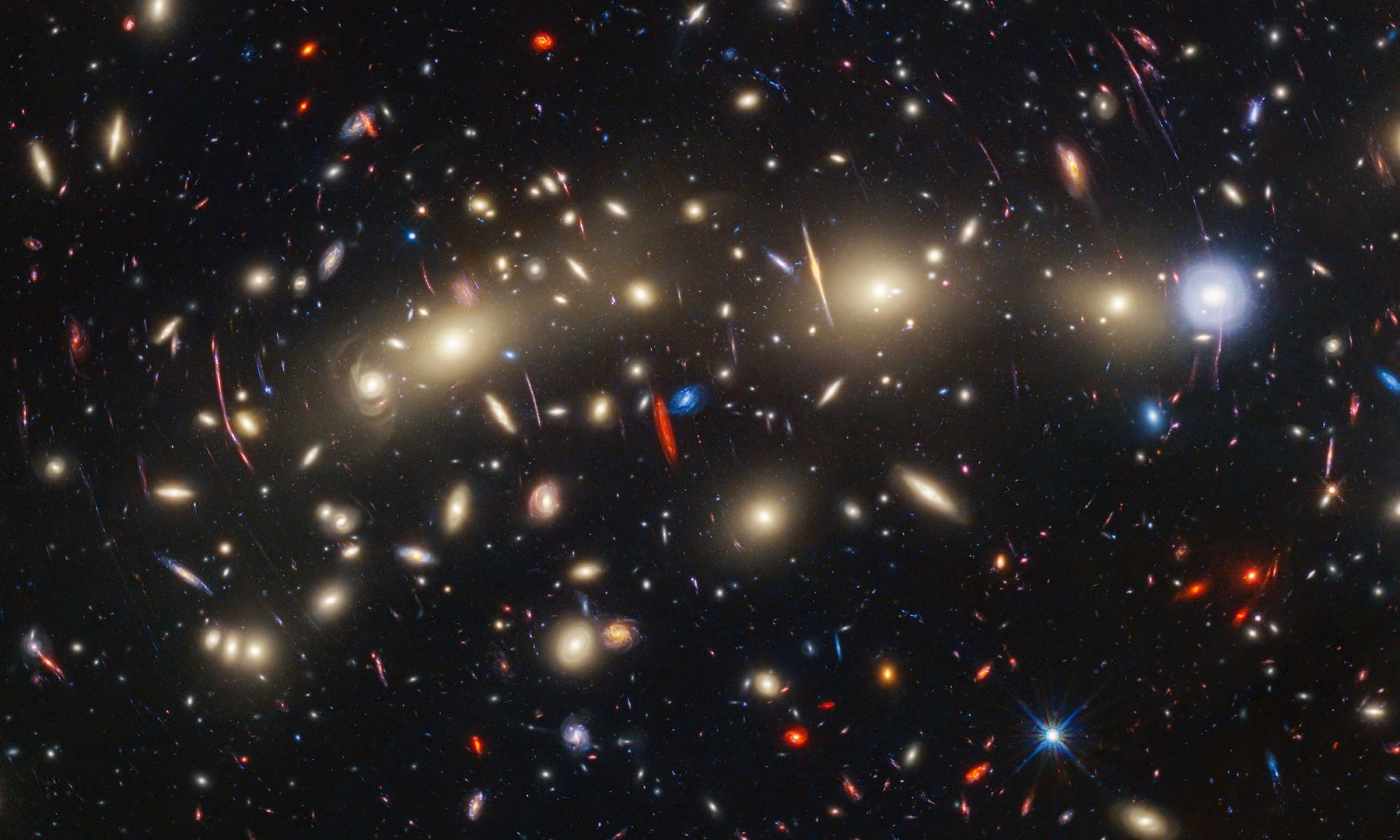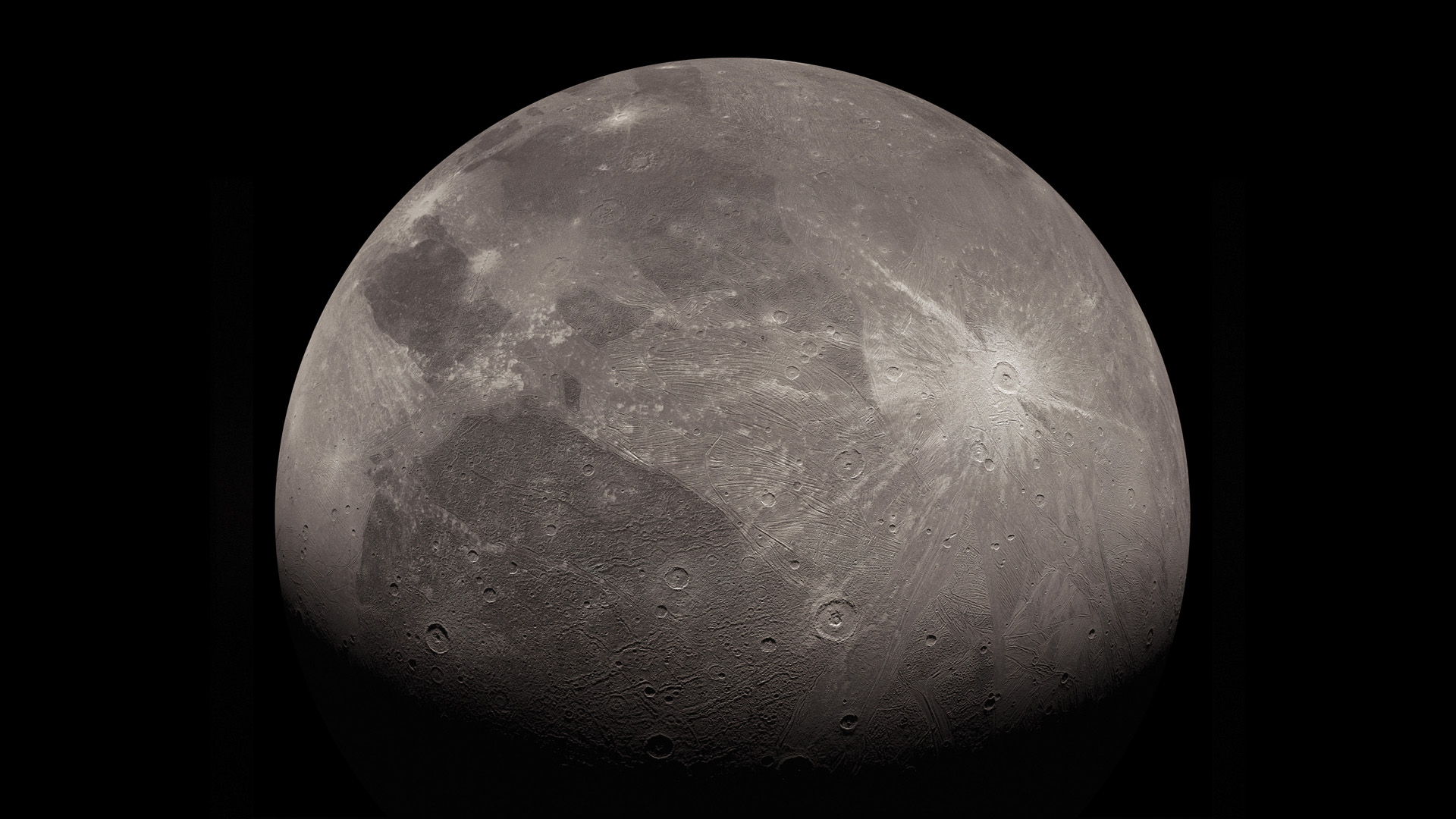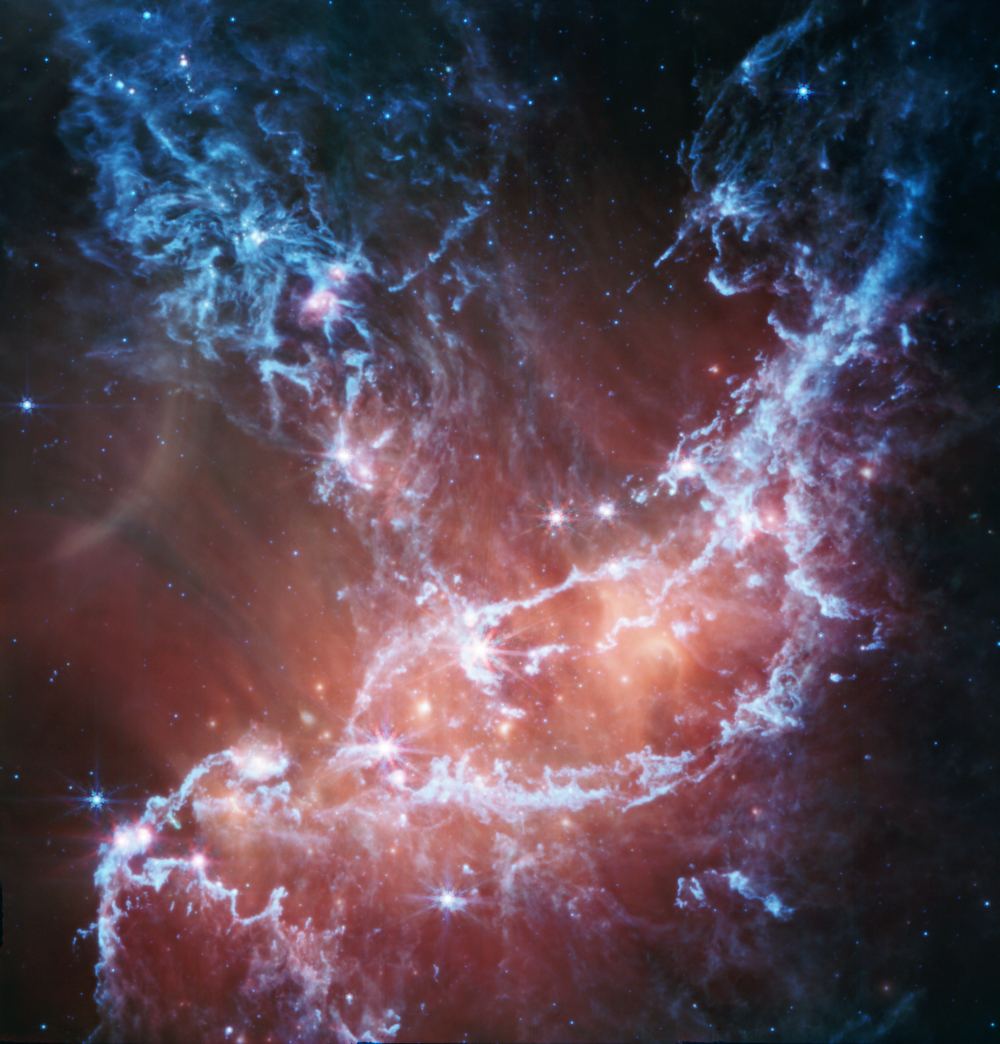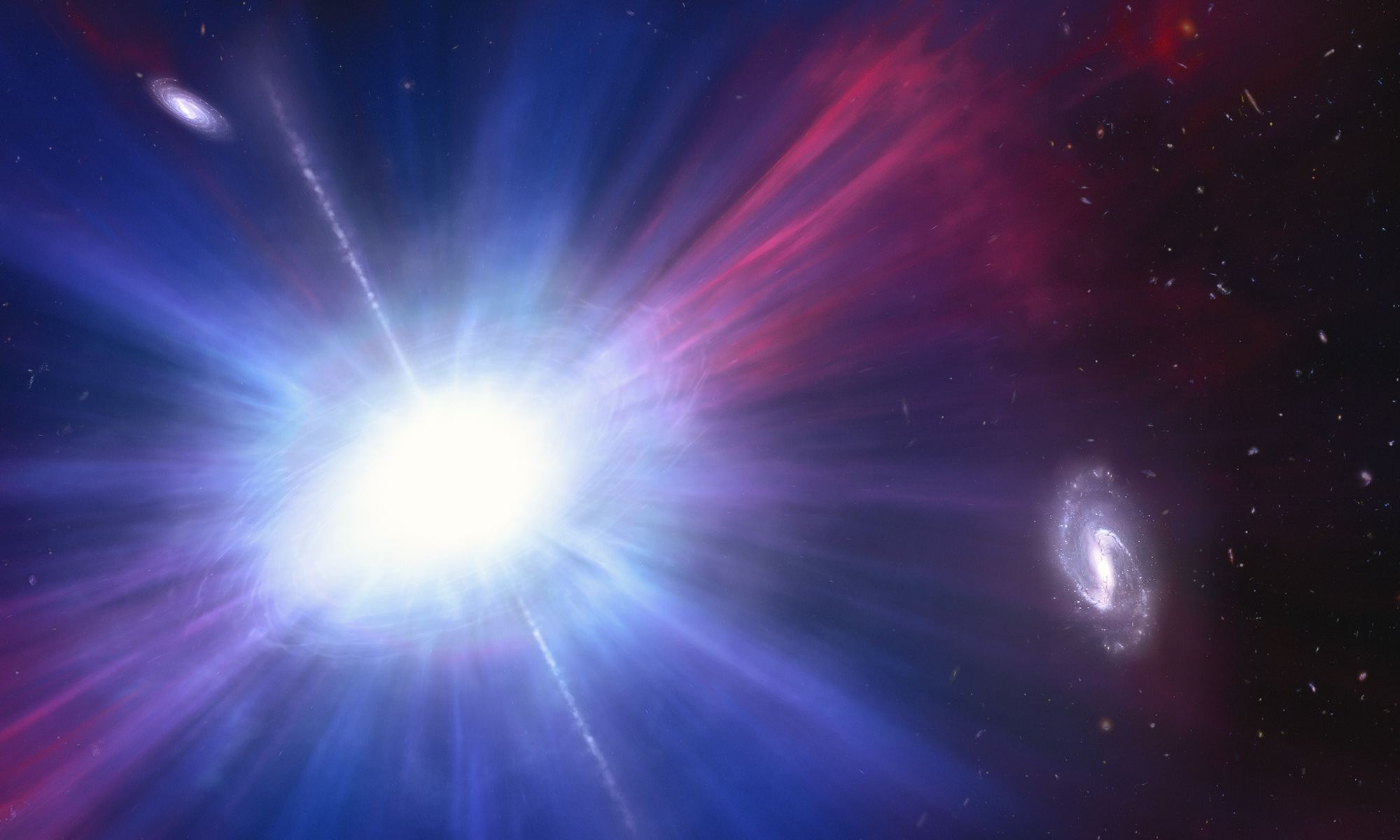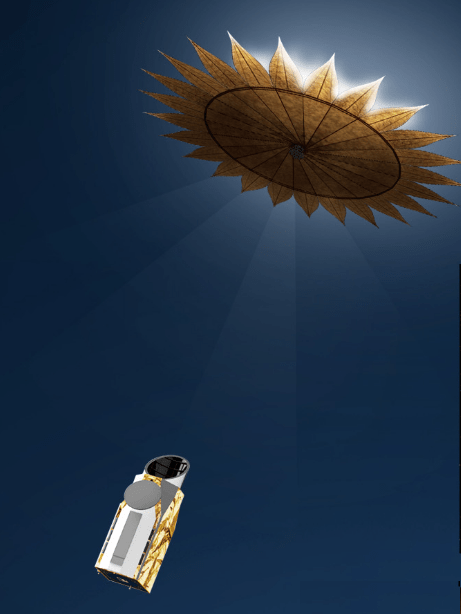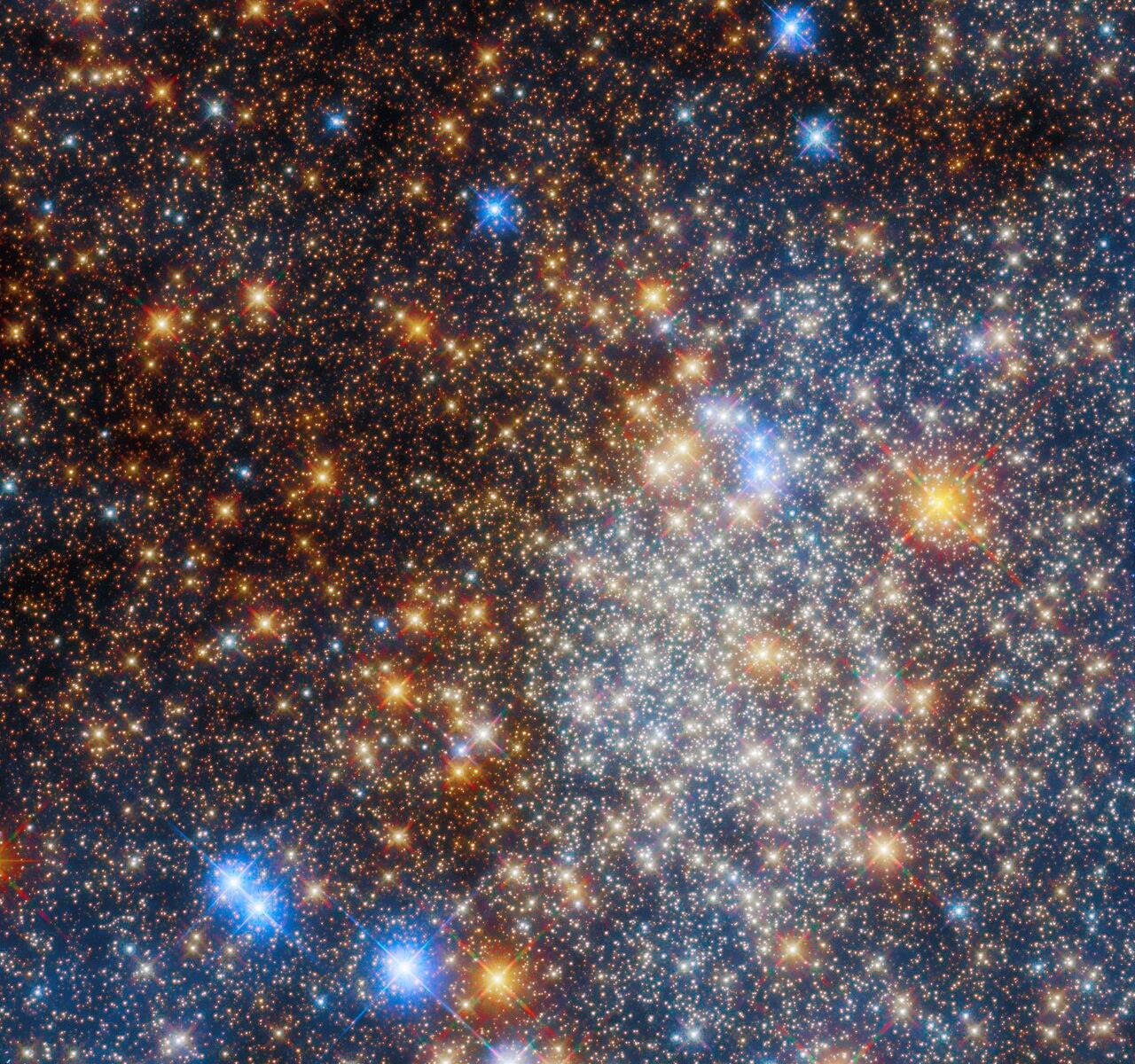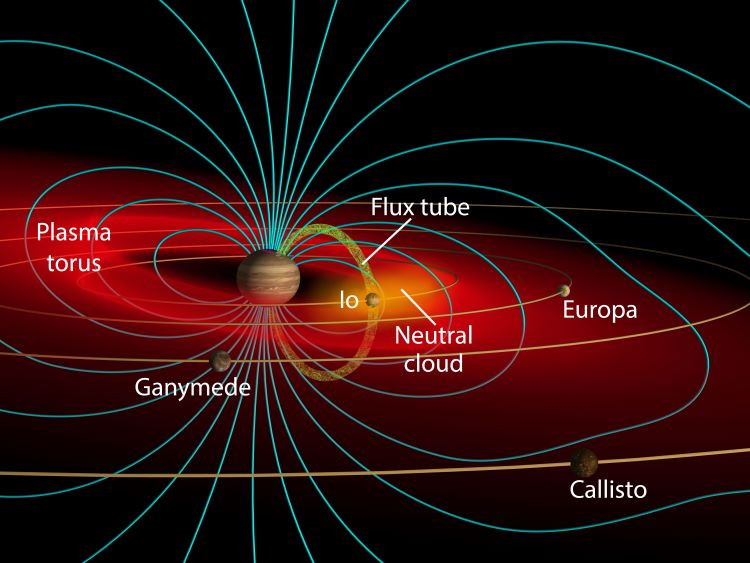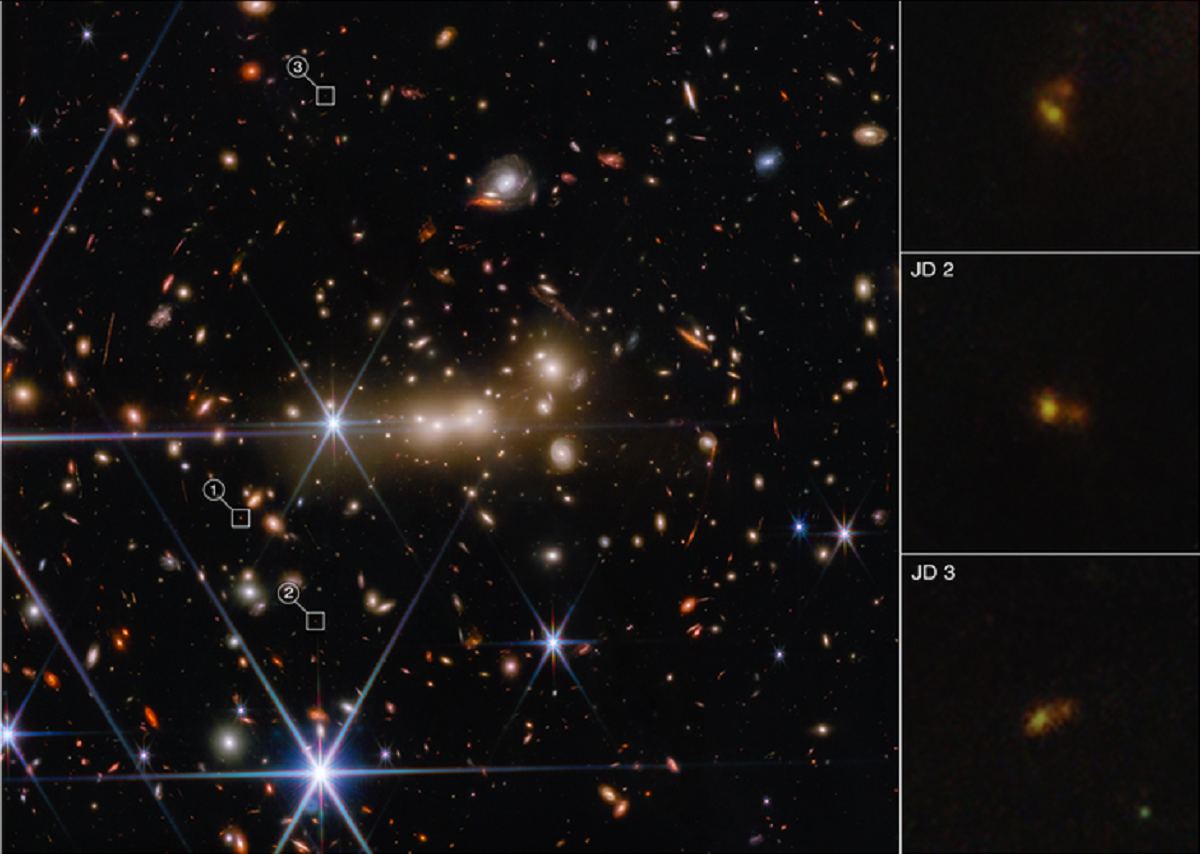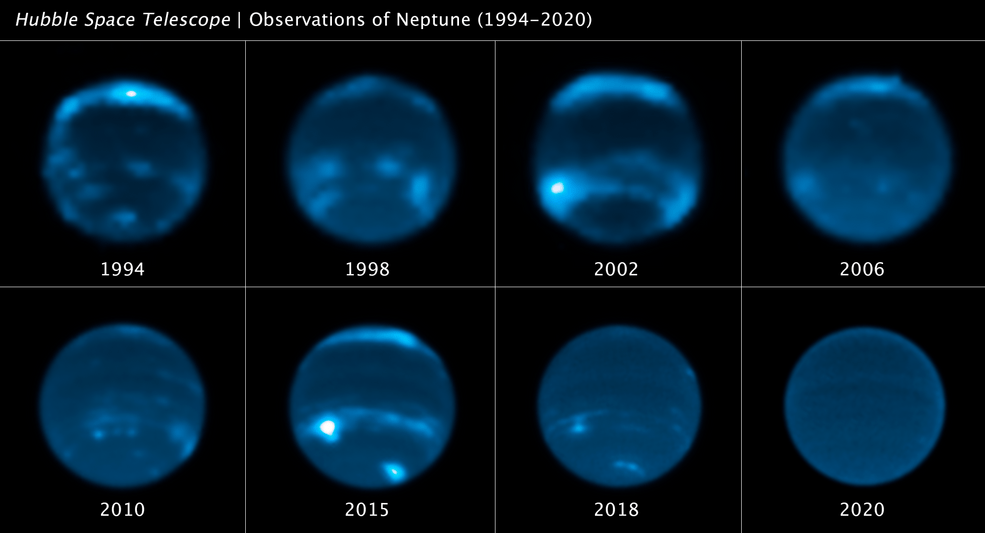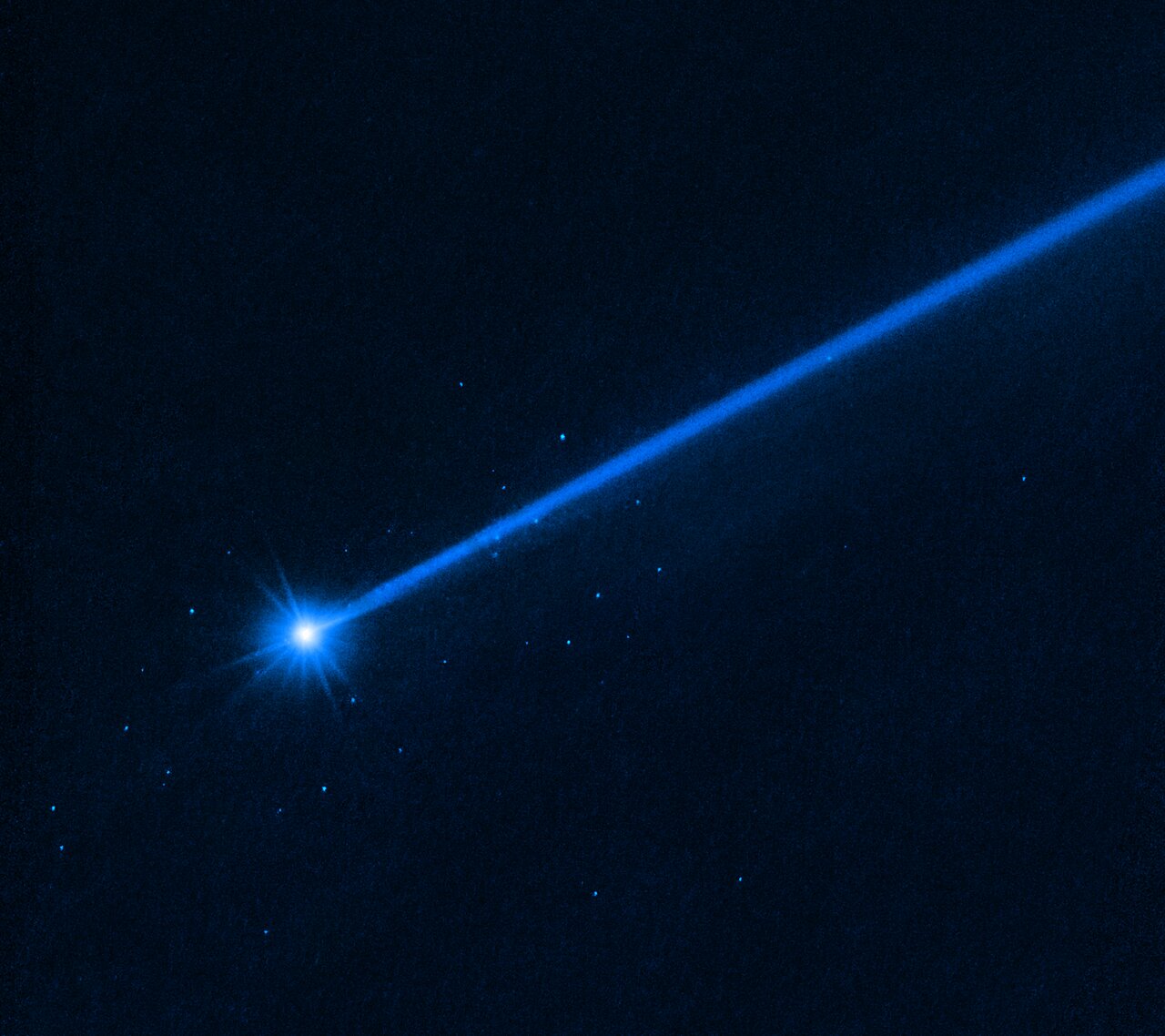In 2012, as part of the MAssive Cluster Survey (MACS), the Hubble Space Telescope (HST) discovered a pair of colliding galaxy clusters (MACS0416) that will eventually combine to form an even bigger cluster. Located about 4.3 billion light-years from Earth, the MACS0416 cluster contains multiple gravitational lenses that allow astronomers to look back in time and view galaxies as they appeared when the Universe was young. In a new collaboration that symbolizes the passing of the torch, the venerable Hubble and the James Webb Space Telescope (JWST) teamed up to conduct an extremely detailed study of MACS0416.
Continue reading “An Epic Collaboration Between Hubble and JWST”An Epic Collaboration Between Hubble and JWST
